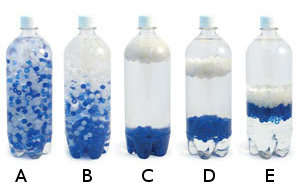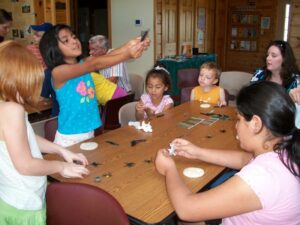 by: Tami O’Connor
by: Tami O’Connor
So, do you ever bring discrepant events into your classroom to capture your students’ attention? If so, the Poly Density Bottle should be on your list of must-haves! As you can see, this is a one-liter bottle filled with clear liquid. Floating at mid-bottle are two bands of beads, with blue on top of the white.

On its own, this is intriguing to many students. The head scratching begins, however, once the bottle is given a good shake. As soon as everything starts to settle, students will observe that the white beads now float at the top of the liquid while the blue beads sink to the bottom. The liquid, once clear, now appears to be slightly cloudy.
But wait, there’s more… After about 30 seconds something interesting begins to happen. The white beads gradually sink down, the blue beads gradually begin to float up, and the liquid above and below the beads is again clear. Now the stumper… Why is this happening? Read the rest of this entry »



 Posted by Tami O'Connor
Posted by Tami O'Connor  by Brandon DeBritz
by Brandon DeBritz by: Michelle Bertke
by: Michelle Bertke